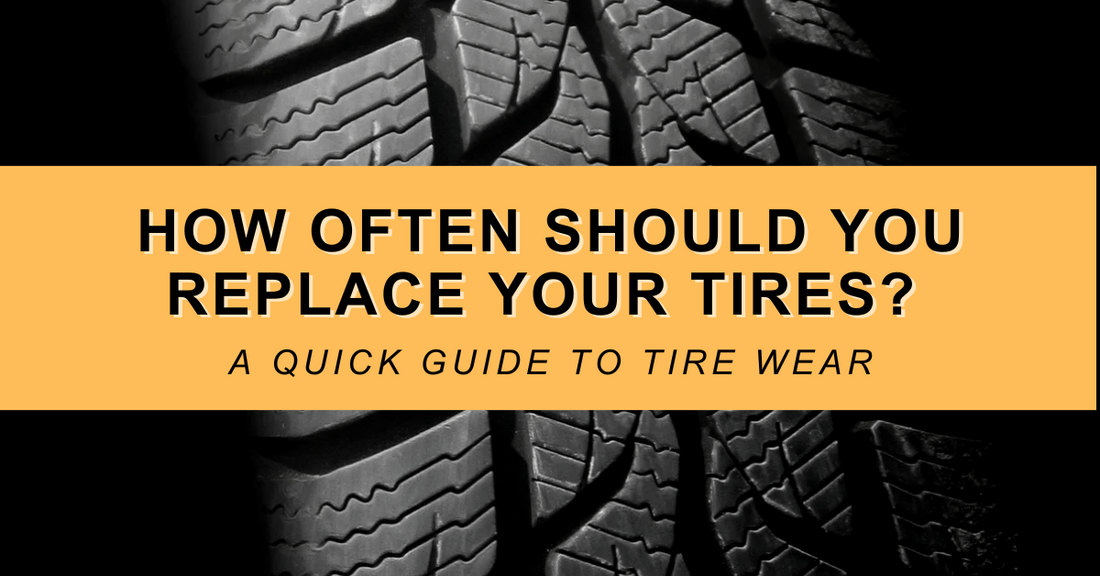
How Often Should You Replace Your Tires? A Quick Guide to Tire Wear
Share
🚗 Why Tire Replacement Matters
Tires are your vehicle’s only contact with the road. Worn-out tires compromise safety, fuel efficiency, and handling—especially in harsh conditions like rain or snow.
But how often should you replace them? And more importantly—how can you tell when it’s time?
⏰ How Often Should You Replace Your Tires?
There’s no universal answer, but here are general guidelines:
| Tire Type | Average Lifespan |
|---|---|
| All-Season Tires | 80,000 to 100,000 km (50,000–65,000 miles) |
| Winter Tires | 40,000 to 60,000 km (25,000–37,000 miles) |
| Performance Tires | 30,000 to 50,000 km (18,000–31,000 miles) |
Tip: Even if tread looks fine, replace tires that are 6+ years old, regardless of mileage. Rubber ages and loses performance.
🔍 5 Signs Your Tires Need Replacing
1. Low Tread Depth
Use the “penny test” or a tread gauge. If tread depth is less than 2/32” (1.6mm), it's legally worn out in many countries.
Canadian Winter Tip: Minimum recommended tread depth is 5/32" (4mm) for safe snow performance.
2. Uneven Wear
Wearing more on one side? It could mean misalignment, improper inflation, or suspension issues.
3. Cracks and Dry Rot
Visible cracks on sidewalls or tread = aging rubber. Time to replace.
4. Bulges or Blisters
A bubble on the sidewall means internal damage—replace immediately.
5. Increased Road Noise or Vibration
If you feel or hear something unusual, inspect your tires or visit a tire shop.
🧪 Visual Examples
New Tire (Full Tread) vs Worn Tire (Low Tread):

Quarter Test Example:

🧪 How to Do the Canadian Quarter Tire Tread Test
Want to know if your tires are worn out?
You can use a Canadian quarter instead of a tread gauge. Here's how:
✅ Step-by-step:
- Take a Canadian 25-cent coin (the one with the caribou on it).
- Insert the quarter into a tire groove with the caribou’s nose pointing downward.
- Look closely at how deep the coin sits:
-
If you can see the tip of the caribou’s nose, your tread depth is below 6/32” (4.8 mm).
➤ That means it’s time to start shopping for new tires—especially for winter driving. - If the nose is partially covered, your tread is still okay—but monitor it regularly.
🧠 Why 6/32"?
For Canadian winters, the minimum safe tread depth for snowy and slushy roads is considered to be 6/32 inch. Below that, tires lose traction and stopping distance increases significantly.
🛠 Tip:
If you drive in heavy snow or icy conditions, don’t wait until your tread hits the legal minimum (2/32”)—change early for safety!
✅ Summary: When Should You Replace Tires?
| Condition | Replace? |
|---|---|
| Tread depth < 2/32" (or 5/32" for winter) | ✅ Yes |
| Uneven wear | ✅ Yes |
| Over 6 years old | ✅ Yes |
| Cracks, bubbles, or damage | ✅ Yes |
🛍️ Need New Tires?
Check out our latest tire collections—filter by size, season, or vehicle type. We carry top brands like Michelin, Goodyear, Bridgestone, and more.
Still unsure if your tires need replacing? Contact our experts—we’re happy to help!












